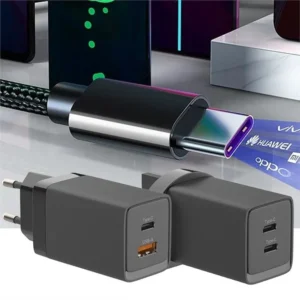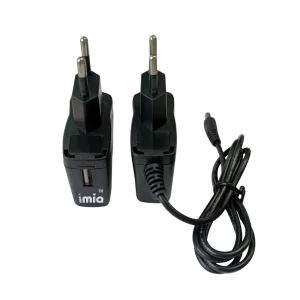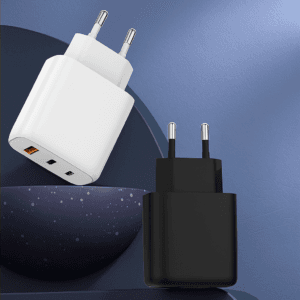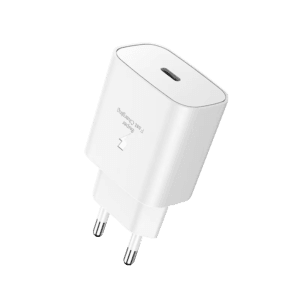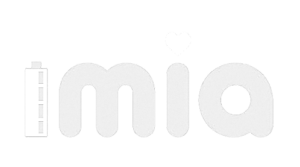En el mundo móvil actual, la velocidad de carga importa más que nunca, y la carga rápida USB-C se ha convertido en el estándar de oro. Con tecnologías como Entrega de potencia (PD), PPS, y Carga rápida (QC 2.0 / 3.0 / 4.0), eligiendo lo correcto Cargador USB-C o adaptador significa la diferencia entre una carga lenta y una potencia máxima en minutos.
Pero, ¿todos los cargadores USB-C son compatibles con todos los protocolos, como PD, PPS e incluso estándares heredados como... BC 1.2 o Control de calidad 2.0? Y lo más importante, ¿son seguros?
Vamos a desglosarlo todo.
Qué es Carga rápida USB-C?
Tecnología de carga USB-C Ofrece mayor transferencia de potencia, orientación de enchufe universal y compatibilidad con una amplia gama de dispositivos, incluidos teléfonos inteligentes, computadoras portátiles, bancos de energía y tabletas.
Ventajas del USB-C sobre el USB-A: Mayor potencia (hasta 240 W mediante USB PD 3.1). Transferencia de datos y carga más rápidas. Conector más pequeño y reversible. Compatible con Thunderbolt y salida de vídeo. Ideal para dispositivos modernos como Samsung, iPhone, Android y portátiles.
Protocolos comunes de carga rápida compatibles con los cargadores USB-C
Si estás usando un Cable USB-C a USB-C o un multipuerto Cargador USB-CEstos son los principales protocolos que probablemente verás:
| Protocolo | Descripción |
| USB PD 3.0/2.0 | Estándar industrial para una carga segura y escalable de 18 W a 240 W |
| PPS (Fuente de alimentación programable) | Ajuste inteligente de voltaje/corriente; necesario para Samsung Super Fast Charge |
| Control de calidad 2.0 / 3.0 / 4.0 | Carga rápida de Qualcomm, común en teléfonos Android |
| BC 1.2 / SDP / CDP / DCP | Modos de carga heredados para dispositivos USB-A |
ConsejoUsar un protocolo incorrecto puede limitar la velocidad de carga o dañar el dispositivo. Siempre use el cable y el cargador compatibles con el protocolo de su dispositivo.
Compatibilidad del cargador USB-C: Qué necesita tu dispositivo
Su cargador puede ser compatible con varios protocolos para funcionar en distintos dispositivos. Por ejemplo: PPS:Requerido para carga rápida en Samsung S22/S23/S24 y teléfonos Pixel más nuevos. PD 3.0:Usado por iPhones (a través de USB-C a Lightning), MacBooks, y bancos de energía. Control de calidad 2.0:Aún es común en los modelos antiguos de Android.
Ejemplo del mundo real: Qué admite su cargador
Si su cargador admite: PD3.0 / 2.0, PPS, QC4.0 / 3.0 / 2.0, Samsung SFC2.0/SFC/AFC, Huawei SCP/FCP, BC 1.2 / DCP
Entonces es compatible con la mayoría de los dispositivos de carga rápida USB-C del mercado actual, incluidos teléfonos, tabletas, Portátiles con Thunderbolt, y aún bancos de energía portátiles.
Pero no lo soportará VOOC, SuperVOOC, Carga Warp, o Carga rápida de Vivo, que son propiedad y requieren hardware específico de la marca.
Seguridad en la carga rápida: consejos que debes conocer
La carga rápida es segura Si utilizas equipo certificadoAquí le mostramos cómo evitar dañar sus dispositivos: Use Cargadores USB-C seguros con adaptadores de alto voltaje de marcas de confianza. Elige cables de carga USB-C robustos que admitan carga rápida. Evite combinar adaptadores USB-A antiguos de baja calidad con cables USB-C de alta velocidad. Confirme que su dispositivo sea compatible con el protocolo del cargador (PPS, control de calidad, PD).
Comparación: QC 2.0 vs USB PD
| Característica | Control de calidad 2.0 | USB PD |
| Pasos de voltaje | 5 V, 9 V, 12 V | Grano fino (PPS o 5 V–20 V+) |
| Máxima potencia | ~18 W | Hasta 240W |
| Compatibilidad | Android (más antiguo) | Universal (Apple, Android, portátil) |
preparación para el futuro, siempre prefiero Cargadores PD + PPS.
Conclusión: Elige con inteligencia y carga con mayor inteligencia
Con tantos dispositivos y protocolos en el mercado, es esencial elegir el correcto Cargador USB-C que apoya múltiples protocolos de carga rápida - incluido PD, PPS, control de calidad 4.0, y aún estándares heredados como BC 1.2Evite los cargadores exclusivos de marcas registradas, a menos que se encuentre en un ecosistema específico de esa marca.
Ya sea que esté cargando su teléfono, computadora portátil o banco de energía, USB-C es el futuro, y Power Delivery es la columna vertebral

